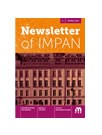The universal minimal system for the group of homeomorphisms of the Cantor set
Volume 176 / 2003
Abstract
Each topological group admits a unique universal minimal dynamical system (M(G),G). For a locally compact noncompact group this is a nonmetrizable system with a rich structure, on which G acts effectively. However there are topological groups for which M(G) is the trivial one-point system (extremely amenable groups), as well as topological groups G for which M(G) is a metrizable space and for which one has an explicit description. We show that for the topological group G=\mathop {\rm Homeo}(E) of self-homeomorphisms of the Cantor set E, with the topology of uniform convergence, the universal minimal system (M(G),G) is isomorphic to Uspenskij's “maximal chains" dynamical system ({\mit \Phi },G) in 2^{2^E}. In particular it follows that M(G) is homeomorphic to the Cantor set. Our main tool is the “dual Ramsey theorem", a corollary of Graham and Rothschild's Ramsey's theorem for n-parameter sets. This theorem is used to show that every minimal symbolic G-system is a factor of ({\mit \Phi },G), and then a general procedure for analyzing G-actions of zero-dimensional topological groups is applied to show that (M(G),G) is isomorphic to ({\mit \Phi },G).









